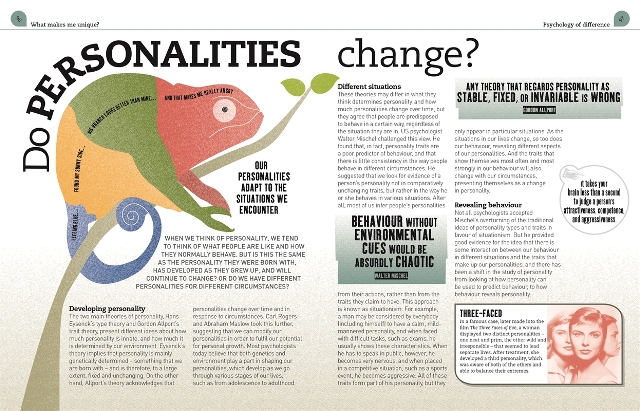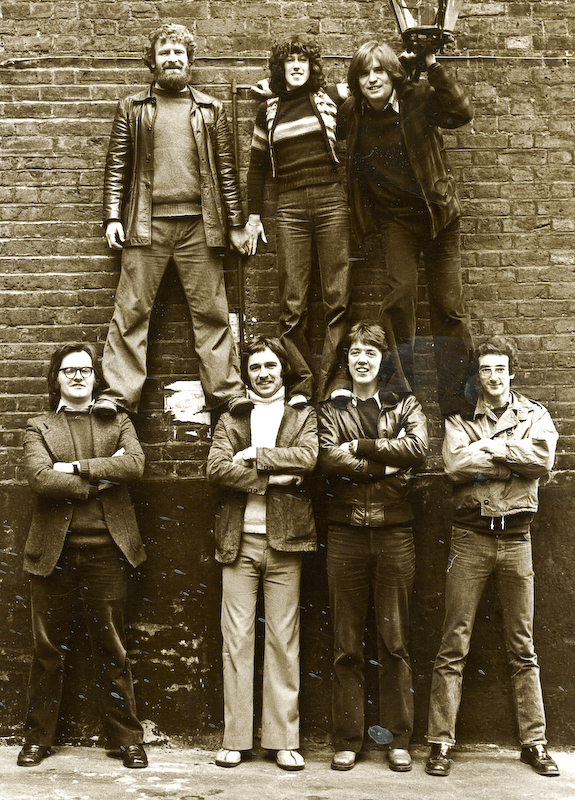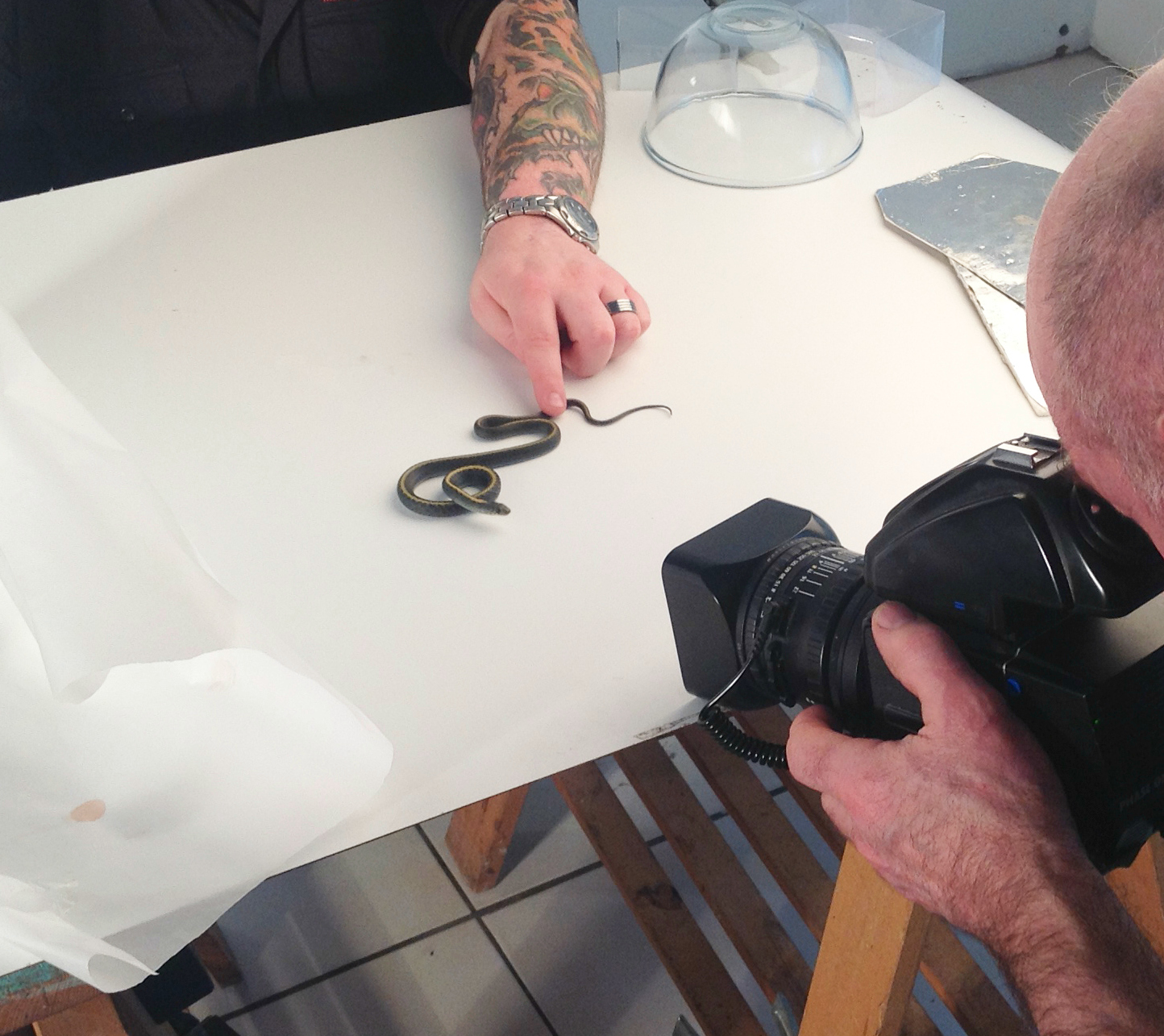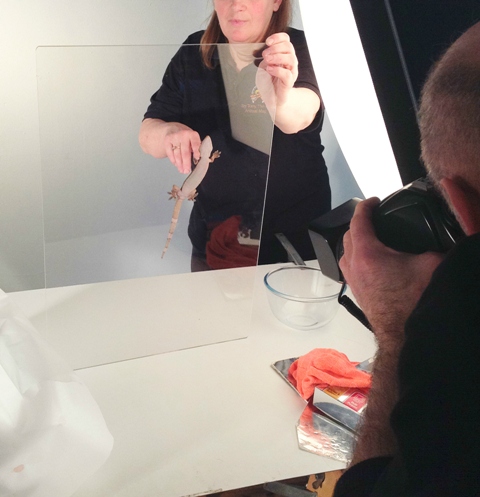 Founded in 1974 in London by Christopher Dorling and Peter Kindersley as a book packaging company, DK moved into book publishing in 1982 and is now part of Penguin Random House. From the beginning, DK has been known for its distinctive style of graphic design: instead of limiting its books to traditional columns of text and square pictures, the company uses emerging computer technologies to create books with elaborate stand-alone images set on white backgrounds and paired with annotative texts.
Founded in 1974 in London by Christopher Dorling and Peter Kindersley as a book packaging company, DK moved into book publishing in 1982 and is now part of Penguin Random House. From the beginning, DK has been known for its distinctive style of graphic design: instead of limiting its books to traditional columns of text and square pictures, the company uses emerging computer technologies to create books with elaborate stand-alone images set on white backgrounds and paired with annotative texts.
This approach gives readers a kind of "freedom of movement" on the page, allowing them to start reading a DK book in many different places--not just at the beginning--and move among the pages with an ease that's impossible with traditional formats. The images, whether photographs, illustrations or infographics, make complex ideas easier to understand and make information more engaging and entertaining for readers of any age.
DK's distinctive photographic style and 3-D diagrams and illustrations also make images look so real that readers want to pick up the object. This approach is especially powerful for helping young people read and learn. Infants are drawn to DK's photographs because of the high contrast of the image on white backgrounds. With toddlers, the photographs help young children recognize and identify everyday objects. For older kids, photographs and images draw them into books and make them want to read more about a topic.
Other companies have tried to use a DK-style approach with varying levels of success, but DK continues to stand out. DK art director Phil Ormerod says that DK's Better by Design approach honed over the years "can look effortless but it is not easy, quick or inexpensive. DK design is not about a stylistic 'formula' but rather a deep-rooted culture that leads our creative teams to question the world around them. DK designers and editors (both of whom are engaged as an equal partnership in the design of DK content) look at the world with fresh eyes and they find amazing new ways not only of capturing it but also of presenting it back to our audience."
 The company's approach, Ormerod continues, is "timeless and increasingly relevant in an age of information overload and extensive digital competition. We still use our signature white background to allow our unique content to shine, and the cut-out nature of the images and the closely nested information contained in our annotations and captions is still an important part of our 'lexigraphic' toolbox."
The company's approach, Ormerod continues, is "timeless and increasingly relevant in an age of information overload and extensive digital competition. We still use our signature white background to allow our unique content to shine, and the cut-out nature of the images and the closely nested information contained in our annotations and captions is still an important part of our 'lexigraphic' toolbox."
At the same time, however, DK is "constantly evolving our styling and presentation as audiences have become increasingly design savvy, while at the same time ensuring that we 'design' our pages rather than 'decorate' them, that form grows from function."
During the last 40 years, improvements in technology have also helped drive change. "The quality and detail of our content--photographs, illustrations, etc.--has gotten better and better and the use of ever more sophisticated software packages has helped us to layer and enrich our page layouts," Ormerod says. "Plus we're constantly looking at our processes--such as content management systems and workflows--to ensure they allow us to deliver our amazing products in better, smarter, more efficient ways."
 With its elements of "the navigation, layering and access points associated with digital media," as Ormerod puts it, DK Publishing design has always lent itself to digital media, which he calls "a natural extension, helping us to bring our content further to life by making use of interactivity, animations, and video, and the processing capabilities of electronic devices."
With its elements of "the navigation, layering and access points associated with digital media," as Ormerod puts it, DK Publishing design has always lent itself to digital media, which he calls "a natural extension, helping us to bring our content further to life by making use of interactivity, animations, and video, and the processing capabilities of electronic devices."
With the introduction of color tablets, Ormerod says, "We started to become really excited about the possibilities of digital. A few years ago we were invited to design product for the launch of Apple's iBook format and we have also produced a number of apps including the award-winning The Human Body. We now have a substantial range of digital products across all of our subject areas and in various digital formats.
"We also have several ambitious online projects in development, including a children's home reference site. We recently launched our own DK YouTube channel and are regularly adding content to that, with a view to making DK the most user-friendly destination for 'how to' information."









 The company's approach, Ormerod continues, is "timeless and increasingly relevant in an age of information overload and extensive digital competition. We still use our signature white background to allow our unique content to shine, and the cut-out nature of the images and the closely nested information contained in our annotations and captions is still an important part of our 'lexigraphic' toolbox."
The company's approach, Ormerod continues, is "timeless and increasingly relevant in an age of information overload and extensive digital competition. We still use our signature white background to allow our unique content to shine, and the cut-out nature of the images and the closely nested information contained in our annotations and captions is still an important part of our 'lexigraphic' toolbox."

 DK is celebrating its 40th anniversary with a year of prizes and promotions for booksellers, librarians and educators. "Our anniversary celebration respects those who helped build DK, by sharing the depth of our commitment," says Therese Burke, senior v-p of sales and marketing, U.S. "Forty years ago, DK created a particular design look for books that still resonates with readers today. This includes being part of children's learning and education on a global basis."
DK is celebrating its 40th anniversary with a year of prizes and promotions for booksellers, librarians and educators. "Our anniversary celebration respects those who helped build DK, by sharing the depth of our commitment," says Therese Burke, senior v-p of sales and marketing, U.S. "Forty years ago, DK created a particular design look for books that still resonates with readers today. This includes being part of children's learning and education on a global basis." DK's ultimate giveaway is the
DK's ultimate giveaway is the 
 In 1997, DK teamed up with the Star Wars franchise, which led to a great expansion of DK children's books with titles like the bestselling Star Wars: The Visual Dictionary and Star Wars: Incredible Cross-sections. In another major licensing deal, in 2009, DK began publishing LEGO books (the billionth LEGO brick was released in a 2012 title). DK has even worked with the two franchises simultaneously, producing LEGO Star Wars (an updated and expanded version of LEGO Star Wars: The Visual Dictionary came out in May).
In 1997, DK teamed up with the Star Wars franchise, which led to a great expansion of DK children's books with titles like the bestselling Star Wars: The Visual Dictionary and Star Wars: Incredible Cross-sections. In another major licensing deal, in 2009, DK began publishing LEGO books (the billionth LEGO brick was released in a 2012 title). DK has even worked with the two franchises simultaneously, producing LEGO Star Wars (an updated and expanded version of LEGO Star Wars: The Visual Dictionary came out in May). DK also works with other entertainment properties, including Marvel, Disney and DC Comics. BradyGames, a DK imprint created in 1993, publishes between 90 and 100 video game strategy guides every year. And DK caters to the very young (ages three and under), with series like Touch and Feel and Sophie la girafe.
DK also works with other entertainment properties, including Marvel, Disney and DC Comics. BradyGames, a DK imprint created in 1993, publishes between 90 and 100 video game strategy guides every year. And DK caters to the very young (ages three and under), with series like Touch and Feel and Sophie la girafe.
 1979: The crew takes reference pictures for the Macmillan Guide to Family Health during a surgery at St. Thomas’ Hospital in London.
1979: The crew takes reference pictures for the Macmillan Guide to Family Health during a surgery at St. Thomas’ Hospital in London. 2012: The DK photography team captures the intricate movements of a Bollywood song-and-dance sequence for the children's book Dance.
2012: The DK photography team captures the intricate movements of a Bollywood song-and-dance sequence for the children's book Dance. 2014: The DK crew and photographer assess the lighting required to photograph a 15-ton sphinx, the largest in the Western hemisphere, located at the University of Pennsylvania Museum of Archaeology and Anthropology in Philadelphia, for the upcoming fall book History of the World in 1,000 Objects.
2014: The DK crew and photographer assess the lighting required to photograph a 15-ton sphinx, the largest in the Western hemisphere, located at the University of Pennsylvania Museum of Archaeology and Anthropology in Philadelphia, for the upcoming fall book History of the World in 1,000 Objects. 2014: A snake handler tries to steady a Santa Cruz garter snake while the photographer patiently waits for it to "taste" the air with its tongue. A shot needed for the Smithsonian Nature Guide: Snakes and Other Reptiles and Amphibians, publishing in July.
2014: A snake handler tries to steady a Santa Cruz garter snake while the photographer patiently waits for it to "taste" the air with its tongue. A shot needed for the Smithsonian Nature Guide: Snakes and Other Reptiles and Amphibians, publishing in July. 2014: During the shoot for Smithsonian Nature Guide: Snakes and Other Reptiles and Amphibians, a reptile handler helps a palm gecko walk up a pane of glass so that the photographer can get a clear shot of the underside of its feet pads.
2014: During the shoot for Smithsonian Nature Guide: Snakes and Other Reptiles and Amphibians, a reptile handler helps a palm gecko walk up a pane of glass so that the photographer can get a clear shot of the underside of its feet pads.